L'edicola digitale delle riviste italiane di arte e cultura contemporanea
Kaleidoscope Anno 3 Numero 13 inverno 2011-2012
New Jerseyy
Quinn Latimer
Having attracted international hype by plumbing collaboration, participation and reception, the Basel off-space will make shows until they don’t.
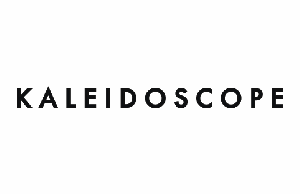
a contemporary magazine
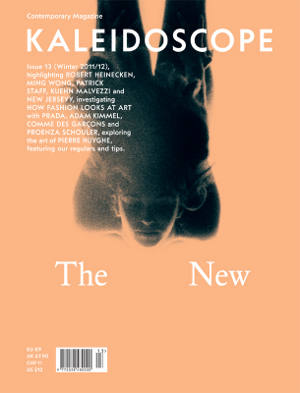
HIGHLIGHTS
Robert Heinecken by Kavior Moon; Ming Wong by Hu Fang; Kuehn Malvezzi by Hila Peleg; New Jerseyy by Quinn Latimer; Patrick Staff by Catherine Wood.
MAIN THEME
How Does Fashion Look at Art?
Prada by Nicholas Cullinan and Francesco Vezzoli; Adam Kimmell by Angelo Flaccavento; Commes des Garçons by Maria Luisa Frisa; Proenza Schouler by Michele D'Aurizio.
MONO
Pierre Huyghe
Essay by Éric Troncy; Interview by Barbara Casavecchia; Special Project: Study for Zoodram; Focus by Chris Wiley.
REGULARS
Pioneers: Bruce McLean by Simone Menegoi; Futura: Ed Atkins by Hans Ulrich Obrist; Panorama: Toronto by Amil Niazi; Souvenir d'Italie: Luigi Ghirri by Luca Cerizza; Producers: Ute Meta Bauer by Carson Chan.
Torbjørn Rødland
Hanne Mugaas
n. 22 autunno -inverno 2014
John Armleder
Andrea Bellini
n. 21 estate 2014
Voiceover: Under the skin
Shama Khanna
n. 20 inverno 2013-2014
Yang Fudong
Davide Quadrio e Noah Cowan
n. 19 autunno 2013
Massimiliano Gioni
Francesco Manacorda
n. 18 estate 2013
John Currin
Catherine Wood
n. 17 inverno 2012-2013
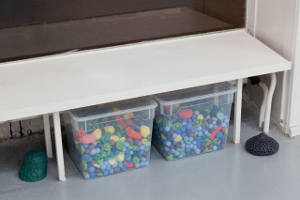
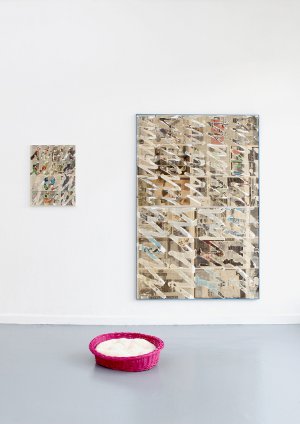
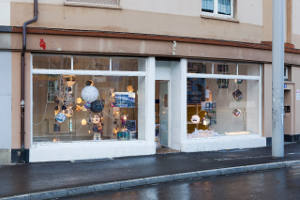
What does New Jersey mean to you? To me, it once meant the ever-mocked and maligned state just across the Hudson River from Manhattan; Christmas marathons of The Sopranos television series on my mother’s couch in California; taking the New Jersey Expressway to Strathmere, a tiny barrier island studded with beach shacks on the Jersey Shore, where the windswept beaches and tumbling dunes change configuration after each Nor’easter; John McFee’s classic The Pine Barrens; clichéd Italian-American mobsters with alarming accents and toxic waste dumps, expensive suburbs and horse farms; hair spray, fake tans, clams and Bruce Springsteen; annual trips to IKEA.
In 2008, this meaning expanded, or was twinned, as it were. Suddenly New Jerseyy, newly equipped with a slurry and superfluous double “y,” also came to mean a small, glass-paned storefront off-space near Voltaplatz, just over the Dreirosenbrücke from my new address in Basel. It meant a tight crew of young Swiss guys — and a few girls — in their inimitable dress code of sneakers, cashmere sweaters and Ray-Bans that would gradually be replaced by Persols. It meant monthly shows of artists from the Basel /Zürich/Geneva trifecta (Switzerland’s own tri-state area), or New York or Los Angeles or Berlin, exhibitions that were thrown up with a deft casualness that masked a studious efficiency and near virtuosity. It meant friend-filled openings I — and everyone I knew — nearly always attended or took part in. They were mellow and congenial; the artists showing were often friends, beer filled the fridge hidden in the back and, after the lights were turned off, there would be pizza at the neighborhood Italian place around the corner. There we would sit at long tables waiting for hours for our pizzas from the overwhelmed waitresses — talking, laughing, boozing, arguing, smoking.
But like the original New Jersey from which it copped its name, New Jerseyy quickly became both an actual place ( for its local audience and participants, often one and the same ) and an idealized idea ( for those who made their home elsewhere but had heard — from some curator or art magazine or artist — of its charms ). It even, somewhat oddly, became a myth. Through the charm, outsized ambition and quiet gravitas of those in charge, this petite storefront became the epicenter of the young Swiss art scene, and often the only thing that people outside the tiny European country knew about northern Switzerland’s art world beyond its internationally famous curatorial doyens and doyennes and Art Basel itself. At dinners in Milan and New York, parties in Berlin and Paris, the same question would be put to me, an American in Basel, “So, are you friends with those New Jerseyy guys? What is with that name anyway?”
I didn’t believe that there was a place in Basel called New Jerseyy at first either. As I wrote a few years ago, while the USA is famous for the oddly aspirational names of some of its smallest towns — E ast Berlin, Pennsylvania; Lebanon, New Hampshire; and, of course, Paris, Texas — I didn’t expect to find a New Jersey[y] on hand when I moved to Switzerland. But in 2008 in Berlin, a gallerist friend heard of my eminent move to die Schweiz and told me about this new art space. One of his artists had shown there: I should check it out; it was cool. I did; it was. The name made more sense as I made my way to Hüningerstrasse 18 in North Basel’s industrial reaches for the first time. Surrounding New Jerseyy’s storefront was a crane- and scaffolding-strewn assemblage of construction sites and jackhammers. The mobsters and marshes of Vater New Jersey suddenly didn’t seem so far off — though just blocks away were narrow streets of pastel shutters, climbing wisteria and the medieval Münster along the milky jade curve of the Rhine.
The neighborhood-as-construction-site was courtesy of the Nordtangente, a decades-old construction of underground tunnels that would connect the Swiss highway system with those of its French and German neighbors, as well as of a nearby campus of pharmaceutical giant Novartis. The trashing of the neighborhood, and the gentrifying attempts to put its pieces back together, contributed to New Jerseyy’s birth. In 2001, Daniel Baumann, an independent curator who is co-curating the next Carnegie International in Pittsburgh, became the director of Nordtangente-Kunsttangente, an arts directive of the Basel canton, aimed at revitalizing the area. Following myriad aesthetic interventions into the construction chaos, including a psychedelic mural by Franz Ackermann and a car-crazy film series (Easy Rider, Two-Lane Blacktop) in the nearby motor tunnel, Baumann began noting an empty storefront opposite all the jackhammering. After picking up a few copies of Used Future, an art ’zine that local artists Tobias Madison and Emmanuel Rossetti and designer Dan Solbach had been making since 2005, hand-distributing it to seminal Basel gallery-bookstore Stampa and Parisian Ur-boutique Collette, Baumann asked them to build this new off-space with him.
That decision would prove profitable, in every imaginable way. Still in school in Zürich when they joined New Jerseyy, Madison, Rossetti and Solbach — all of whom have since made international names for themselves to varying degrees — would come with a crew of eager young Swiss artists. They would also prove startlingly adept at forging relationships with similar souls, engaging in equally multifarious artistic and curatorial practices, plumbing collaboration and craft, consumerism and improvisation, participation and reception, in New York (Reena Spaulings, Grand Openings, the Swiss Institute); Zürich (Karma International); Paris (Balice Hertling); Geneva (Hard Hat); and Basel itself (Galerie Nicolas Krupp). Furthermore, though New Jerseyy ceased getting money from Nordtangente-Kunsttangente after two years, the off-space’s roots and ethos come from this unprosaic twining of industry and community, urban growth and its discontents. This is fitting, as traditional notions of art- and exhibition-making, beauty and meaning, run counter to the program that Baumann and company envisioned anyway.
See, for example, the first few shows, which featured artists Justin Beal, Anna Ostoya and artist-curator Annette Amberg, as well as a book launch for artistpublisher Tobias Kaspar’s Drums and Impressions ( 2008 ), which Baumann impishly described in the press release: “For this book Tobias Kaspar uses product photography, a cheap, self-made studio and a low-end digital camera with no intention to promote any product [...] [T]he hack is used as a starting point for an installation in the shape of a book. Drums and Impressions, reminds you, just like in stand-up comedy, of the necessity to know ‘Where to Go and What to Do even though You have absolutely nothing to say, but you want to say it anyway.’” He also helpfully noted: “There’s a softness to the book. The cover is structured rather than over-padded; the alligator skin effect is as delicious as silk.”
This sly “what you (materially) see is what you (conceptually) get” — no art historical graduate thesis being written by the curators here — would come to define New Jerseyy’s straight-faced curatorial sensibility, which was perhaps no more directly expressed than in “Clinch/Cross/Cut” during Art Basel in 2008, when the space was turned into a boxing club at the instigation of John Armleder and his students. The show filled New Jerseyy with a jock-ish installation of punching bags, gloves and weights, and featured a program that saw local artists sparring and jogging in the dusky evenings around the decimated neighborhood. This post-Fluxus move was indicative of the playful yet serious focus on participation and discursiveness in regard to medium and exhibition-making that followed.
See the drawing show put on later that same winter, “The Line Is a Lonely Hunter.” The survey replaced the punching bags with works on paper by more than 60 artists (Kim Seob Boninsegni, Hermann Nitsch, Mai-Thu Perret, Emily Sundblad, Betty Tompkins, Andro Wekua, and others) hung haphazardly, salon-style. That was the first New Jerseyy show I attended after moving to Basel earlier that month. During the opening, Daniel Baumann gave me a book about the history of Swiss graphic design that I kept pawing on one of the tables. I met Kunsthalle Basel curator Adam Szymczyk and others. Everyone was there, though not in the sense of an art fair preview or art-star-filled dinner where one goes “to be seen,” but casually, locally and unassumingly.
As the following years unfolded, New Jerseyy’s success meant that its different periods began to become discernable and take shape. The beginning was loose, speculative, searching; as the curators tested the different formal possibilities, the art space created. The international hype began after a series of solo exhibitions featuring an array of artists about to be or already on a certain high-profile trajectory—a good gallery roster, an Artforum Top Ten. With these one- or two-man or woman shows—Ei Arakawa/Sergei Tcherepnin, DAS IN STIT UT, Ida Ekblad, Nikolas Gambaroff, Kaspar Müller, Carissa Rodriguez and Amy Yao, among many others—New Jerseyy tried on the role of trendsetter. This role stuck, to everyone’s professed dismay, so they eventually went back to more thematic exhibitions and shows of music, film, performance and text, which couldn’t be so quickly co-opted by the art market, the magazines or the hungry gallerists. “Anonymous Design,” for example, offered a survey of art books designed by Yvonne Quirmbach; “Meet Me At The Bottom of the Poem,” organized by curator Piper Marshall and artist John Tremblay, featured renderings and readings of the found poems of Bern Porter; and guitarists Oliver Falk and Paolo Thorsen-Nagel improvised a live score to the 1930 Georgian silent film Salt for Svanetia.
In a sign of the interest ( if not always the unmitigated success ) in and of such shows, they—and New Jerseyy itself—have recently spawned a spate of likeminded spaces by Jerseyy cohorts. In Zürich, Asahi Picture News ( or AP News, as it’s called ), focusing on film and sound performance, just opened, the brainchild of Madison, who runs it with Fatuma Osman, Falk and Rossetti. Across the same city, there is Studiolo, headed by Karma International alums Niels Olsen and Freddie Fischli. In Basel, Museum für Gegenwartskunst curators Nikola Dietrich and Scott Cameron Weaver, along with writer Tenzing Barshee and artist Hannah Weinberger, just opened the project space Elaine. New Jerseyy has done its job and more. If my tone sounds slightly retrospective, it is. Next summer Baumann will move his family to Pittsburgh while he works on the next Carnegie International there. Madison and Rossetti are busy with their own art careers and their new space, Solbach with designing books. The fate of Hüningerstrasse 18 is undecided. Solbach might take it over as his studio; New Jerseyy might become a production company, finding financing for artists’ projects. As Baumann told me recently, “We don’t want to be prisoners to some curatorial concept: we kind of say it’s over next year but we really don’t know.”
While watching a slow-as-molasses German film about Schindler’s Los Angeles – area homes at AP News recently, Madison told me he likes the idea of New Jerseyy-as-production company. Rosetti shrugged his shoulders. Regardless, they’re continuing to look forward. As the closing date in August nears, there will be no nostalgic surveys nodding a hat at what they accomplished. They’ll just make shows until they don’t. Baumann told me a few years ago of New Jerseyy, “It’s a return to the real world, perhaps, making something in a specific place.” What the new real world will herald when that “specific place” has closed its doors remains—like so much else in worlds both authentic and fake—up in the blue, autumnal air.


